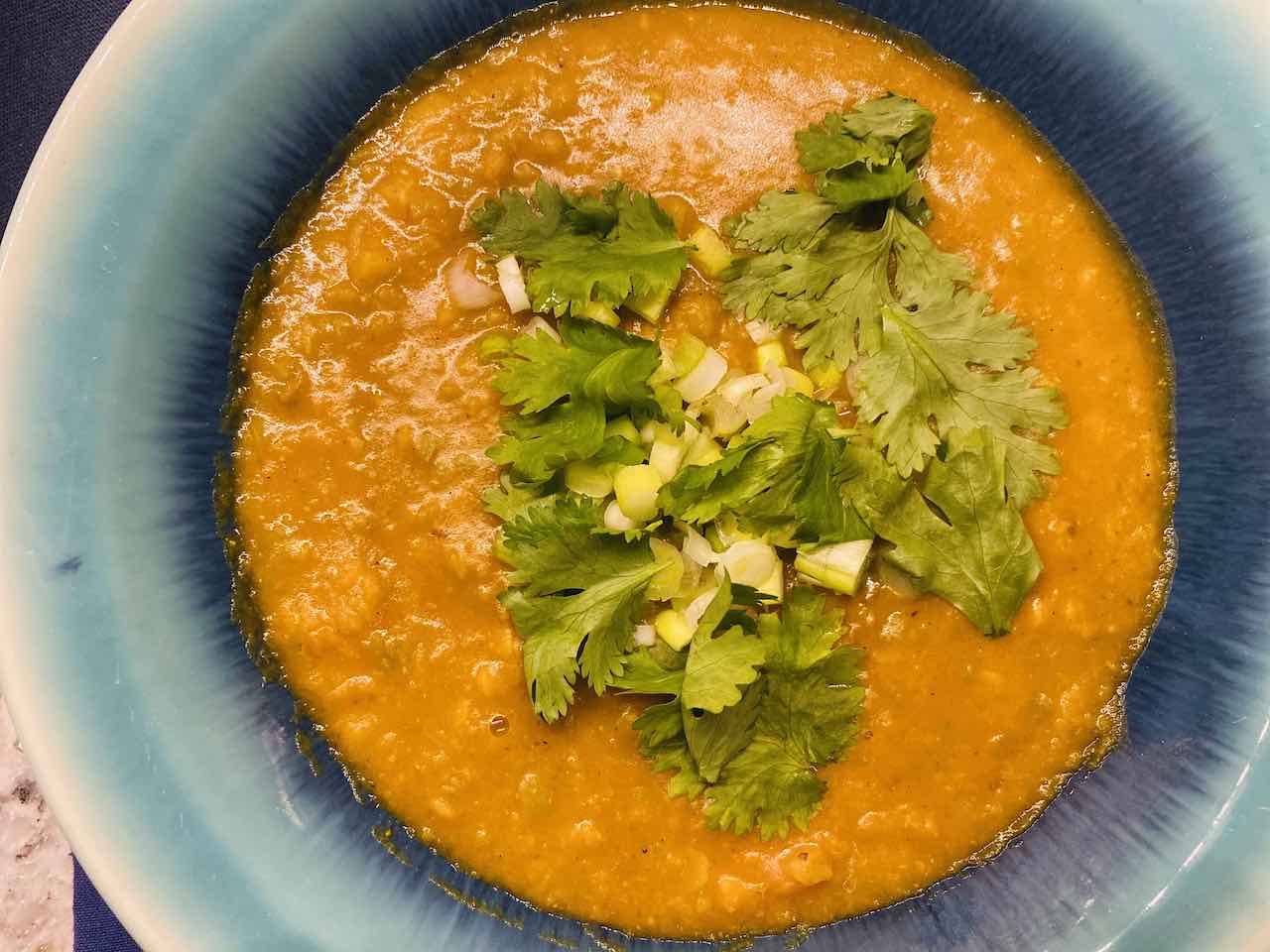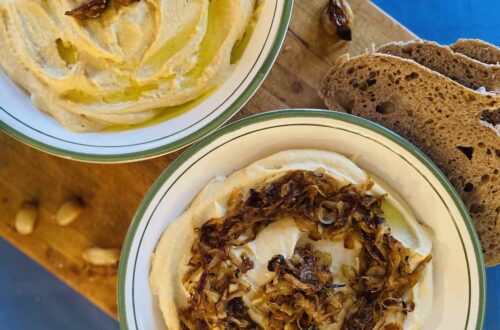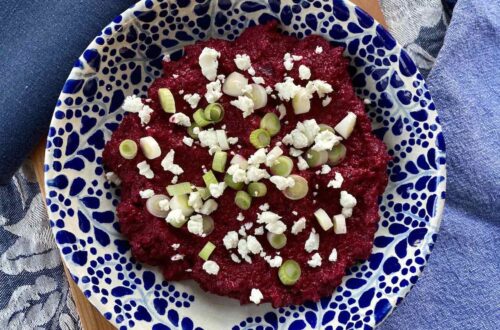
Red Lentil and Split Pea Soup
Back over the summer, I had big plans for posting about Thanksgiving foods. Thanksgiving is one of my favorite holidays, and I was going to embrace it like never before. I was planning to ask a friend for her recipe for bourbon-chocolate-pecan pie, post my favorite stuffing recipe (with hot Italian sausage and maple syrup), and look into the supply chain of cranberries. Unfortunately, none of that happened. (Things like work, Covid-19, and the election got in the way.) But I’m back, planning to post more regularly again, and wanted to restart with a warm soup for the cold December evenings.
I don’t know when I first made this soup, but it puts all other lentil soups to shame. I once made it for my friend Drew, who liked it so much that years later he still mentions it when we talk. (He also went out and bought lentils to make the soup – pounds and pounds of lentils. Two years later the remains of these lentils had started to sprout…but we made the soup and it tasted just fine with sprouted lentils.) What I’m trying to say is that if you are looking for a cozy pandemic soup, this is it.
Since this is the first post in a while, I wanted to restart with something upbeat, so I decided to focus on lentils. There are numerous types of lentils, including red (used in this recipe), black, white, yellow, brown, grey, green, and many more. But what are lentils? Lentils are a member of the pulse family, which are part of the legume family. (A legume is any plant that grows in a pod, while a pulse is the dry edible seed in the pod.) While legumes include peanuts, soybeans, fresh peas, and fresh beans, pulses are dry beans, dry peas, chickpeas, and lentils.
As many of you know, lentils are a great source of protein, minerals, and fiber and are low in fat. This explains why they are a staple food for so much of the world. However, Americans don’t eat a lot of lentils. In fact, the US exports 90 percent of the lentils we grow and the greatest demand for lentils in the US is for pet food.
In addition to being good for you, lentils and other pulses are environmentally friendly. (Plus, in North America there do not appear to be any labor abuses.) Lentils, like other pulses, are nitrogen-fixing crops, which means that they bring nitrogen back into the soil, making the soil healthier. Lentils use bacteria that’s already in the soil to convert nitrogen in the air into nitrogen that the plant can use to nourish itself – essentially making its own fertilizer. For this reason, some farmers in the great plains have started to grow pulses in fields that would otherwise lie fallow in between wheat or other crops.
But lentils remain a small part of agriculture in the US and pale in comparison to wheat and rice. (In 2019, wheat was grown on 15,039,090 hectares in the US, while lentils were grown on only 174,420 hectares.) While North America and Asia are the main producers of lentils in the world, Canada is the leader in North America – and the largest producer of lentils in the world. According to one estimate, about 95 percent of Canada’s lentils are grown in the province of Saskatchewan. (The US also grows lentils – in much smaller quantities than Canada – in Montana, Idaho, Washington, and North Dakota, but exports 90 percent of them.)
The long and short of this is that we should all be eating more lentils. Lentils are the trifecta: nutritious, easy to cook, and environmentally friendly. The United Nations agrees, having named 2016 the “Year of the Pulse.” So maybe we should take a note from the UN – albeit a few of years late – and all make lentils a staple of our diets. Hope you all enjoy this recipe.
Red Lentil and Split Pea Soup
Course: Dinner, Recipe, Soup6
servings55
minutesAdapted from 101 Cookbooks Coconut Red Lentil Soup Recipe
Ingredients
1 cup red split lentils
1 cup yellow or green split peas
7 cups water
1 medium carrot, cut into 1/2-inch pieces
2-3 tablespoons ginger, minced
2 tablespoons curry powder
4 tablespoons butter
8 green onions or scallions, thinly sliced
5 tablespoons golden raisins
1/3 cup tomato paste
1 (14-ounce) can coconut milk
2 teaspoons sea salt
½ cup cilantro, roughly chopped
Directions
- Rinse both the lentils and split peas well. (They are well-rinsed when the water is no longer murky.) Add the lentils and split peas to a large pot with 7 cups of water and bring to a boil. Once boiling, reduce to a simmer and add the carrots and 1 tablespoon of the ginger. Simmer for 30 minutes, until the lentils and split peas are soft.

- In a small saucepan, toast the curry powder over low heat. This takes just a few minutes – don’t overcook it or it will burn. When toasted, set it aside.
- Melt the butter in a small pan. Then add the raisins, remaining ginger, and half of the green onions to the butter. Stirring constantly, sauté for about two minutes until the raisins begin to plump up.
- Add the tomato paste and curry powder to the raisin mixture and mix together. Cook over low heat for 2-3 minutes.

- Add the raisin mixture to the lentils. Then add the coconut milk and salt and stir. Let the mixture simmer for about 20 minutes, uncovered.
- Adjust the soup to your desired consistency. Top with the rest of the green onions and cilantro. You can serve this as a soup or over rice.

Notes
- While you can certainly make these with either yellow or green split peas, yellow ones add a sweeter, richer flavor.






2 Comments
Avis Miller
What happy news and great reading, as usual
Bites & Rights
Thanks, Avis!